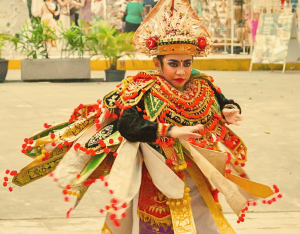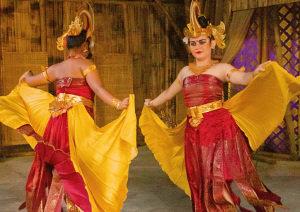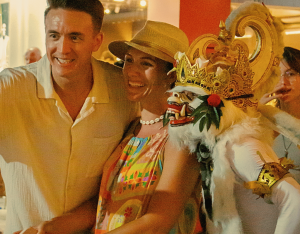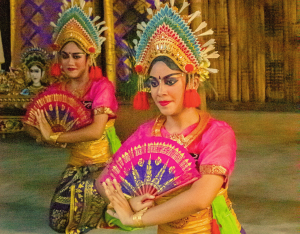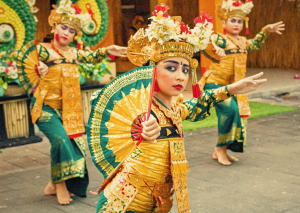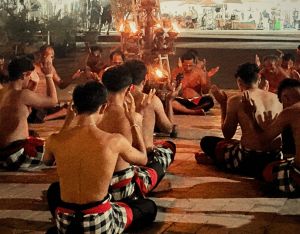Bali is more than just a paradise of landscapes it is a visual and spiritual world where what you wear speaks as profoundly as what you perform. Traditional ceremonial attire in Bali is not only a cultural treasure, but also a sacred expression of purpose, status, and belief. From daily rituals to grand temple festivals, these garments embody the beauty of devotion. But what do these clothes truly represent, and how are they connected to Bali’s iconic dances and ceremonies? Let’s explore the colors, symbols, and cultural functions of Balinese ceremonial attire.
Ritual Clothing with Purpose and Meaning
In Balinese tradition, ceremonial dress follows clear codes that reflect the spiritual intent of a ritual. These garments are not chosen for fashion they are chosen for their meaning.
Men typically wear a kain kamben (sarong), saput (layered cloth), udeng (headband), and a collared shirt.
Women dress in a kebaya (lace blouse), kamen or kain (long cloth), a selendang (sash), and often adorn their hair with flowers or pins.
This attire is worn during everything from family temple visits to large-scale public ceremonies. Variations may occur between villages and regions, reflecting the dynamic and living nature of Balinese tradition.
Colors That Carry Meaning
In Bali, color is never just aesthetic it holds deep spiritual significance.
-
White symbolizes purity and clarity, often worn during prayers and cleansing ceremonies.
-
Yellow represents sacredness and prosperity, commonly associated with offerings and deities.
-
Red expresses passion, strength, and energy, often seen in celebratory or protective settings.
-
Black and white checkered patterns (poleng) embody the balance of opposing forces good and evil, chaos and order.
Paired with golden embroidery, intricate weaving, and handmade detailing, ceremonial garments become both visually captivating and spiritually symbolic.
Dance and Costume: Where Art and Ritual Meet
In Balinese performing arts, costume and meaning are inseparable. The visual language of ceremonial attire enhances every movement in dance, transforming performance into spiritual expression. In the refined Legong dance, performers wear golden headdresses and brightly colored silk fabrics that reflect elegance and nobility.
The welcoming dance Pendet features flowing garments and floral touches that symbolize hospitality and joy.
The sacred Rejang dance, performed during temple ceremonies, incorporates soft movements and attire in white and yellow echoing themes of purity and devotion.
These costumes are not merely decorative. They act as sacred visual codes that represent the character, mood, and spiritual energy of the performance.
Bringing Traditional Attire to the Stage
At Sawelas Nusantara, ceremonial attire is more than just performance clothing it is a tribute to Balinese cultural heritage. Our team collaborates with skilled local artisans to ensure that every costume reflects authentic symbolism and traditional craftsmanship.
Through our live shows and cultural programs, we invite you to look beyond the surface to discover the meaning within each fabric, each color, and each detail passed down through generations.
📍 Visit us at Bali Collection, Jl. ITDC Nusa Dua Lot BC, Benoa, South Kuta, Badung, Bali.
📅 Check our event schedule and experience how costume and ceremony come alive through movement and meaning.
Step into tradition and see how clothing becomes a sacred expression of culture.
